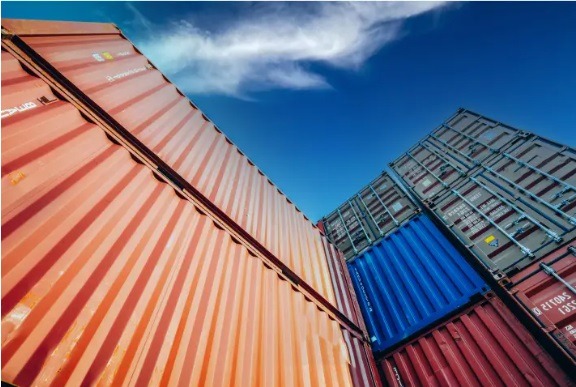The hospitality and tourism sector faces unique logistics challenges due to its specific requirements and complexities. Efficient logistics management is crucial for delivering exceptional customer experiences and ensuring high levels of customer satisfaction. However, many companies in this industry struggle with common pain points and limitations in their current logistics processes, leading to inefficiencies and potential customer dissatisfaction.
The hospitality and tourism sector has distinct logistics requirements that set it apart from other industries. The industry involves managing a wide range of goods and supplies, including food and beverages, linens, amenities, and equipment. These items need to be carefully coordinated and delivered to various locations, such as hotels, resorts, restaurants, and tourist attractions. Each location may have different timing and volume requirements, making logistics planning and execution complex.
Common pain points in current logistics processes within the hospitality and tourism sector include lack of visibility, poor coordination, and inefficient inventory management. Many companies rely on manual tracking and communication methods, which can lead to delays, errors, and difficulties in meeting customer expectations. Inadequate visibility into the status and location of shipments can result in missed delivery windows, causing inconvenience to customers and negatively impacting their experience.
Inefficient logistics can have a significant impact on customer experience and satisfaction in the hospitality and tourism sector. Delays in receiving essential supplies can disrupt operations, leading to subpar service delivery. For example, if a hotel runs out of clean linens or a restaurant faces delays in receiving fresh ingredients, it can directly affect the customer’s experience. Inconsistencies in inventory management can also result in overstocking or understocking, leading to operational disruptions and dissatisfied guests.
To address these challenges, implementing a comprehensive logistics management solution, such as a freight management system or freight management software, is essential. These transportation management solutions offer features specifically tailored to the needs of the hospitality and tourism sector. They provide real-time visibility into shipments, enabling companies to track the movement of goods, anticipate delays, and take proactive measures to ensure timely delivery. By streamlining logistics processes, companies can enhance coordination, optimize inventory management, and meet customer expectations.
Benefits of Implementing Logistics Visibility Software
Implementing logistics visibility software in the hospitality and tourism sector brings a multitude of benefits that contribute to a seamless and efficient freight management solution. This software empowers companies to overcome challenges and optimize their logistics processes, resulting in enhanced customer experiences and improved operational efficiency.
One of the key benefits of implementing logistics visibility software is real-time tracking and visibility of goods and supplies. By utilizing advanced freight management systems, companies can gain comprehensive visibility into the status and location of shipments throughout the supply chain. This real-time tracking capability allows stakeholders to monitor the movement of goods, anticipate potential delays, and proactively address any issues that may arise. With increased visibility, companies can provide accurate information to customers, ensuring transparency and building trust.
Enhanced coordination and communication between stakeholders are crucial in the hospitality and tourism sector. Logistics visibility software facilitates seamless collaboration among various stakeholders, including suppliers, carriers, and internal teams. Through centralized platforms and communication tools, relevant parties can exchange real-time information, track progress, and resolve potential issues promptly. This improved coordination results in smoother operations, minimized disruptions, and ultimately, better customer experiences.
Streamlined inventory management and stock replenishment are significant advantages of logistics visibility software. By integrating inventory management systems with freight management solutions, companies can optimize their inventory levels, reduce stockouts, and ensure timely stock replenishment. The software provides real-time data on inventory levels, demand patterns, and consumption rates, enabling companies to make informed decisions and prevent inventory-related issues that could impact customer satisfaction.
Key Features and Components of Logistics Visibility Software
Logistics visibility software is equipped with key features and components that enable effective freight management solutions. These features leverage advanced technologies to provide real-time data collection, tracking, and monitoring of shipments, automated alerts for issue resolution, and powerful analytics for performance analysis.
Integration of IoT-enabled devices and sensors is a crucial component of logistics visibility software. These devices and sensors are strategically deployed throughout the supply chain to collect real-time data on various parameters such as location, temperature, humidity, and condition of the cargo. By integrating this IoT data into the software, companies can have comprehensive visibility into the entire logistics process. This real-time data collection enables proactive decision-making, as companies can monitor the status of shipments and take immediate actions to prevent delays or address any issues that may arise.
A centralized dashboard is another key feature of logistics visibility software. It provides a single, unified interface where users can track and monitor all shipments in real-time. The dashboard offers a visual representation of the supply chain, displaying the location of shipments, estimated delivery times, and other relevant information. This centralized view enables logistics managers to have a holistic understanding of the freight movement and facilitates effective decision-making and coordination among various stakeholders.
Automated alerts and notifications play a crucial role in logistics visibility software. The software is equipped with intelligent algorithms that can detect potential issues or exceptions in the logistics process. When such issues occur, automated alerts and notifications are sent to the relevant parties, enabling them to take immediate action. This proactive approach helps in resolving issues before they escalate, ensuring smooth operations and minimizing disruptions in the supply chain.
Analytics and reporting capabilities are vital for performance analysis within logistics visibility software. The software collects and analyzes data from various sources, providing valuable insights into key performance indicators (KPIs). Companies can generate comprehensive reports on metrics such as delivery times, on-time performance, transportation costs, and customer satisfaction. These analytics enable companies to identify trends, areas of improvement, and opportunities for cost savings and operational efficiencies.

